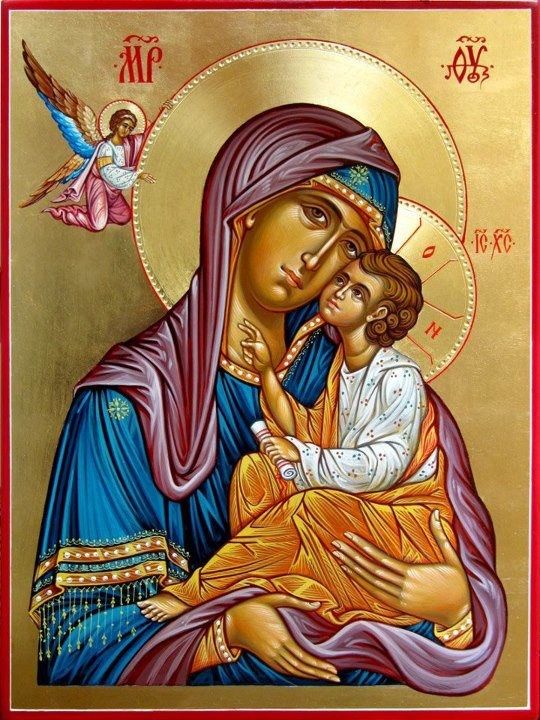In his excellent book Everyday Glory, Gerald McDermott explains how many Christian writers have drawn a symbolic connection between the moon and the blessed virgin Mary. This is because, just as the moon does not have light in itself, but rather reflects the light of the sun, so too does Mary not have divine light in herself, but rather reflects the glory of her Son. Although the author thought this to be a legitimate symbol in creation, he denied that it has any basis in Scripture, which is something I strongly disagree with.
The connection between Mary and the moon, I would say, comes from Revelation 12:1-6. In this part of St. John’s vision, he sees “a woman clothed with the sun, with the moon under her feet, and on her head a crown of twelve stars.” As I’ve explained at length before, that this woman is Mary is undeniable, and notice the celestial imagery used to describe her. It’s not arbitrary, rather it’s taken directly from the dream of Joseph:
“Behold, I have dreamed another dream. Behold, the sun, the moon, and eleven stars were bowing down to me.” But when he [Joseph] told it to his father and to his brothers, his father rebuked him and said to him, “What is this dream that you have dreamed? Shall I and your mother and your brothers indeed come to bow ourselves to the ground before you?” (Genesis 37:9-10)
In this dream, Joseph sees the sun, moon, and eleven stars bowing down to him (the twelfth star), and Jacob inadvertently explains what the dream means: the sun is Joseph’s father, the moon is his mother Rachel, and the eleven stars are his brothers. A lot could be said about this, but for our purposes, notice the celestial image assigned to the only woman in this vision: the moon. Tying this back to John’s vision, we can see that Mary having “the moon under her feet” (a euphemism for dominion) is indeed meant to draw a symbolic connection between our Blessed Mother and the moon.
If there’s any doubt about this, consider how Mary is portrayed as a new Rachel elsewhere in the New Testament. Arguably, she’s associated with Rachel in Matthew 2:13-18, which quotes Jeremiah 31:15 as a backdrop for Herod’s slaughtering of Bethlehem’s infants, “A voice is heard in Ramah, lamentation and bitter weeping. Rachel is weeping for her children; she refuses to be comforted for her children, because they are no more.” In Matthew 2, Mary is the only mother explicitly named, and in the next verses from Jeremiah’s prophecy, the weeping woman is assured, “they shall come back from the land of the enemy… your children shall come back to their own country” (Jeremiah 31:16-17). It so happens that the only child we see returning to “the land of Israel” is Jesus (Matthew 2:21), which would make Mary take the place of weeping Rachel.
Furthermore, Brant Pitre makes an interesting argument for Mary and Rachel’s association in his wonderful book, Jesus and the Jewish Roots of Mary. We know from Genesis 30-35 that Rachel is only the mother of two sons, Joseph and Benjamin, and as Seraphim Hamilton documents, both the Old and New Testaments portray Joseph as a type of Jesus (compare Genesis 37:5-10 and 49:8-12). Thus, Mary simply being the mother of Jesus already points towards her identification as a new Rachel. But what about Benjamin? Well, consider John 19:
When Jesus saw his mother and the disciple whom he loved (ἠγάπα) standing nearby, he said to his mother, “Woman, behold, your son!” Then he said to the disciple, “Behold, your mother!” And from that hour the disciple took her to his own home. (John 19:26-27)
At the foot of the cross, Mary becomes the mother of the Lord’s “beloved disciple.” Why is this significant? It’s because in Deuteronomy 33:12 we learn that Benjamin is “the beloved (ἠγαπημένος) of the Lord,” meaning that Mary has become the mother of the new Benjamin. Not only this, but she does so while “the sword pierces her soul” (cf. Luke 2:34-35), i.e. while undergoing a kind of death, just as Rachel herself died while giving birth to Benjamin (Genesis 35:16-19).
As such, I think we can confidently say that Scripture does indeed identify Mary as the new Rachel, who herself is typified by the moon, allowing us to say with confidence that the moon truly is a symbol of Mary. That the moon reflects the light of the sun is an image of Mary reflecting the glory of the Sun of Righteousness.
